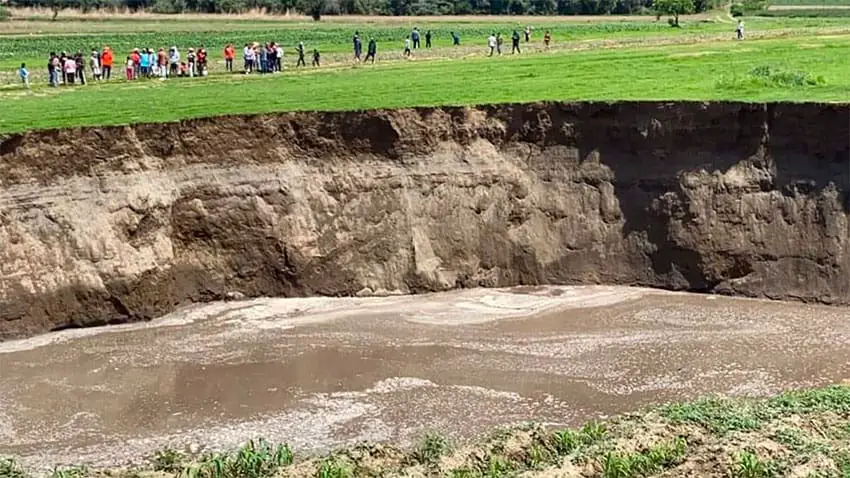The sinkhole that emerged in Puebla late last month has caused national intrigue, but there are other similar recurrences of the geographic anomaly — though none as big — across the country.
In Iztapalapa, Mexico City, a sinkhole that appeared on June 14 was attributed to heavy rains, but locals say the installation of streetlights caused “vibrations in the ground.”
The next day, a drainage leak caused a large hole in Tulancingo, Hidalgo, after heavy rain. Authorities worked through the night to repair the leak.
In Villahermosa, Tabasco, a day later, a chasm emerged to swallow a whole lane of a highway, capping off three new sinkholes in as many days.
On Friday, in Mérida, Yucatán, another sinkhole emerged in the patio of a home. It measured five by four meters and about eight meters deep. In recent days, a 15-meter-wide crack appeared in Celaya, Guanajuato, once again attributed to heavy rains.

Meanwhile, the now famous sinkhole in Puebla has become a fully fledged tourist attraction. Tens of families visit the hole each weekend in Santa María Zacatepec, about 20 kilometers northwest of Puebla city, where they can pay 5 pesos to access the roof of a house close to the security barrier to exploit the photo opportunity.
Tacos, elotes and souvenirs are available at the site, and a commemorative bread from a nearby bakery has proven a hit: it features the two dogs that fell into the sinkhole, Spay and Spike, who were rescued on June 11 after 72 hours in the pit.
However, the bakery may want update the bread’s design after another dog was filmed inside the sinkhole. Drone footage taken yesterday, which has received 283,000 views, shows a mixed breed dog stuck at the bottom. Animal rights organizations had previously suggested that the security perimeter be reinforced to prevent animals breaching it.
Residents, supported by the drone footage, have also reported a further 30 unexplained smaller holes in the area.
The sinkhole was reported to measure 126 by 114 meters on June 9; larger than the pitch at the Aztec Stadium and five times wider and double the length of the Olympic swimming pool in Mexico City.
With reports from Infobae, El Universal Puebla, El Universal and UnoTV
